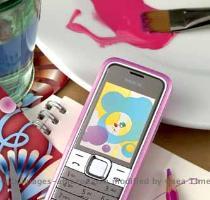New version of Bluetooth dials down the power for long battery life from connected watch
By Peter Svensson, APMonday, April 19, 2010
Low-power version of Bluetooth coming for watches
NEW YORK — A new version of the Bluetooth wireless technology could expand what can be done by watches, toys, home sensors, medical monitors and other devices that typically have been limited in their functions because they don’t get their batteries changed or charged very often.
Imagine your wristwatch now telling you who’s calling on your phone and showing your text messages.
The industry group behind the Bluetooth standard planned to announce Tuesday that chips for the new, low-energy version of Bluetooth will be ready in a few months, and will probably show up in consumer products by the holidays.
“It’s going to enable an entirely new market for Bluetooth and allow it to be used in a category of products that Bluetooth just couldn’t be used in before,” said Michael Foley, executive director of the Bluetooth Special Interest Group.
He said he believes health and fitness products like pedometers and glucose monitors could be a big new market for Bluetooth. Some of them have their own, proprietary wireless technologies, but the standardization brought by Bluetooth could make them cheaper and allow them to connect to many more devices.
Bluetooth-equipped watches hit the market about five years ago. They were heavy and required charging every few weeks. They vibrated to alert the wearer to calls on his cell phone (if it was within range) and showed the number of the caller. The low-energy version of Bluetooth should enable these watches to be no bigger than regular watches and last more than a year on battery power, Foley said.
However, for a cell phone to connect to the watch, the cell phone needs to have a Bluetooth chip that’s compatible with the new low-energy version. Phones with existing Bluetooth chips won’t be able to connect.
The low-energy version has been delayed by a few years. Nokia Corp. started developing it in 2001 under the name “Wibree.” In 2007, Nokia donated the technology to the Bluetooth group to promote wide adoption. Foley said then that that group would combine it with the Bluetooth standard in 2008. But then the group got preoccupied with another addition to Bluetooth, one that would allow it to transfer large files at Wi-Fi speeds.
Tags: Bluetooth Technology, Communication Technology, Consumer Electronics, Mobile Communications, New York, North America, United States, Wireless Technology



